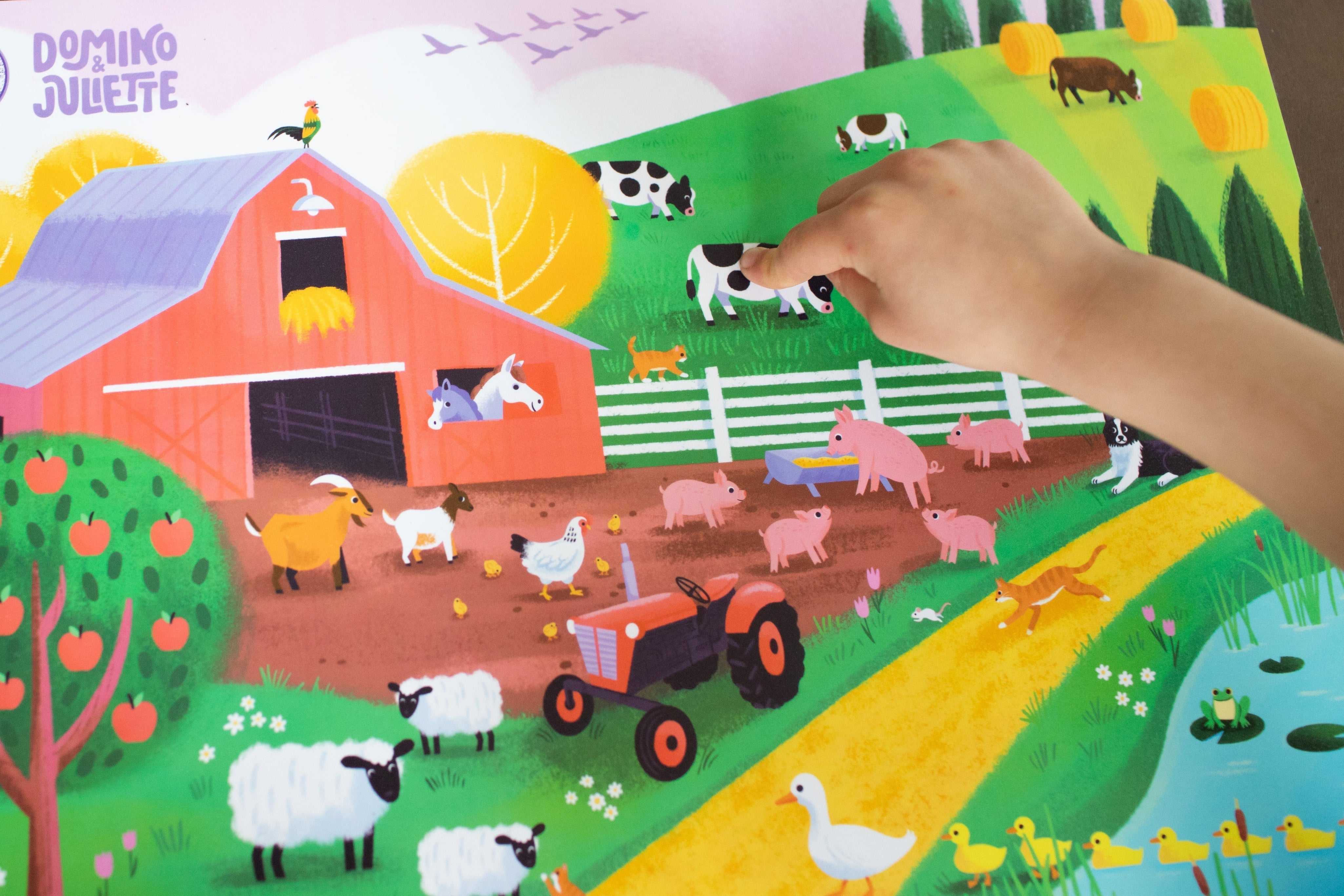Auditory Sensory Play And Early Speech Development-2

I think we have a natural bend toward wanting to play around with sounds–think about it! Many of our babies blow raspberries and babble, making the same “ba-ba-da-da” consonant-vowel strings for days, weeks or months before trying out a new sound. Hand them a spoon and they immediately turn any object in sight into an instrument. Perhaps many of us were born to create sound!
When creating D & J placemats centered around the farm, the safari, the woods and the ocean, we knew we’d be tapping into the world of sounds–and we were excited for such auditory sensory play!
I’ve spoken with several speech and language pathologists about the “do’s” and “don’t’s” when working on anything pertaining to sound exploration–specifically when it comes to having fun with animal sounds. I don’t want to toot my own horn (okay, yes I do) but they applauded that I was interested in exploration of animal sounds as a starting point in auditory sensory play. Basically, young ones want to have fun and to play when learning something new, so it makes sense that starting with cows mooing and fish blub-blubbing would be the way to go! I was told simple song play and parent modeling of animal sounds without saying, “Say ‘moo’ or say ‘baa’” is an excellent way to get your talkers talking! Apparently very young humans don’t like to be told what to do (go figure!) and would rather autonomously respond when they’re ready–by eliminating the prompt or word “Say”, you’re taking the pressure off your child to perform. Once they see your delight in their little “meows” and “neighs” they’ll most likely continue to practice them and associate them with the corresponding animal across activities and environments.

Around the ages of 8-14 months (but don’t get stuck on this age-range, some follow a different timeline and that’s okay), children begin to imitate sounds in their environment. As they “play” with their sounds you’ll note it is repeated sounds or single, easy consonants and vowels they produce and attach meaning to. Animal sounds meet them where they’re at developmentally and, more likely than not, are an automatic smiling-inducing practice! So grab the On The Farm mat and practice those “oink-oinks”, grab the Under the Sea mat and show off your best “swish-swish” sounds, or the Into The Woods mat and belt out a howl. How about the Safari mat and your best monkey-noise? Whatever the mat, whatever the age and learning level, there’s nothing better than modeling the sounds of the scenes and engaging with your child for even 5 minutes together, without expectation of imitation but with much auditory sensory play exposure!


